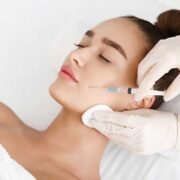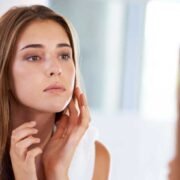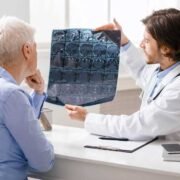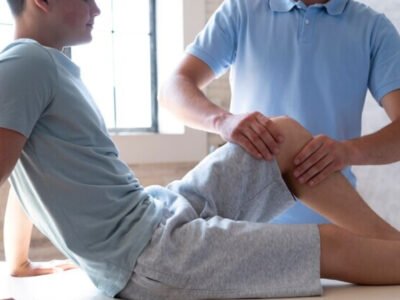Fungal acne is a skin condition that causes pimples and other blemishes to form on the face, neck, chest, or back.
Acne can be embarrassing and uncomfortable for those affected by it. Many people don’t know what type of acne they have until it’s too late. They use over-the-counter treatments that either don’t work or cause more damage than good. Some people even have painful cysts on their faces caused by fungal infections!
But don’t worry. Keep reading because our article will teach you everything you need to know about fungal acne so you can finally get rid of your pimples once and for all!
What Is Fungal Acne?
Fungal acne is an infection of the hair follicles, the sebaceous glands, and the skin. This type of acne presents itself in small pimples that are usually seen on the face, neck, chest, or back.
Fungal acne isn’t common but it can be hard to get rid of since anti-fungal medications are not readily available over-the-counter for use against this condition.
The condition makes the skin inflamed causing redness and itchiness to appear on infected areas. Be aware that fungal acne might not have pus at all so there’s a chance you could think it’s just regular acne when you first see these pimples.
What Causes Fungal Acne?
In order to have fungal acne, you need to have an infection caused by a fungus. The fungi usually enter our body through the hair follicles and this is what makes the condition so hard to deal with as it isn’t as simple as using anti-fungal cream or gel once.
This type of acne can be caught if you are around surfaces that are moist, pools, damp towels, etc – basically, any surface that could contain fungi.
You should always keep in mind that if you go on holiday to another country then there’s a good chance there are some types of bacteria or fungi that your body doesn’t know how to fight against.
That is why some people get conditions like athletes’ feet while traveling abroad for example.
What Does Fungal Acne Look Like?
Fungal acne appears as pimples that are red in color. Usually, these are found around the neck, chest, and back area but they can also appear on your face.
Around the pimple, you will see some inflammation which also causes redness to be visible at this point. The fungal acne can have pus or not have pus so it might be hard to tell if you are dealing with regular acne or fungal acne.
Since there is a good chance that these types of conditions can appear without having any other symptoms, clinical diagnosis should always take place before starting treatment against it.
Be aware that fungal infections come with additional symptoms like itchiness or rash on the skin, dry skin, scaling skin, thickening of the skin.
Where is Fungal Acne Located?
The infection can infect several parts of the body that are typically covered with hair. The common areas where fungal acne is most often seen are around the neck, chest, belly button area, and back.
This type of acne may appear on people who have problems with excessive sweating as this could be an underlying cause for it so being aware if you suffer from heavy sweating is important when trying to prevent this condition from developing.
Since there are fungi everywhere around us, it would be hard not to pick up a fungus or two but remember that some conditions need maintenance in order to stop them from returning. You should always do your research before taking any treatment against fungal acne.
How to Treat Fungal Acne?
Since fungal acne is an infection, the best way to treat it is with anti-fungal medications. These are not always easy to find as they are not typically sold over-the-counter so you might need a prescription from your doctor in order to get the right medication.
Anti-fungal treatments usually come in the form of cream or gel and need to be applied directly on the infected areas. It’s important that you continue using these medications even after the infection has cleared up as this will help to prevent it from returning.
It’s also very important that you keep the skin clean and dry as this will help to reduce the chances for fungi to develop on your skin. It’s best to avoid tight clothing and you should dry yourself properly after taking a shower or bath.
The condition is also known for being very stubborn so be prepared to use the medication for at least one month in order to get rid of it completely. You might need to try several brands before finding one that works for you but nothing will happen if you give up too soon, just keep trying until you find the right product.
Make sure not to share towels with others as this can easily spread the infection to other people. It’s always better to be safe than sorry so never take any risks when it comes to your health and wellbeing.
What Are the Symptoms of Fungal Acne?
The most common symptoms of fungal acne are small, red lesions with a pus-filled center. The lesions might be itchy or irritated and can easily become inflamed.
The condition is often mistaken for regular acne but there are a few key differences that you should look out for. Fungal acne is typically more round or oval in shape, while regular acne is more spread out.
In addition, the pus in fungal acne is usually white or yellow in color, whereas regular acne has a reddish-brown color.
Want to Learn More About Fungal Acne?
Fungal acne is a skin condition that can be difficult to diagnose. It often presents as blackheads or whiteheads, but the most telling symptom is intense redness on your face.
We hope this article has given you a great insight into what is fungal acne and the causes of fungal acne.
If you would like to learn more about the different types of acne, please visit our blog!












